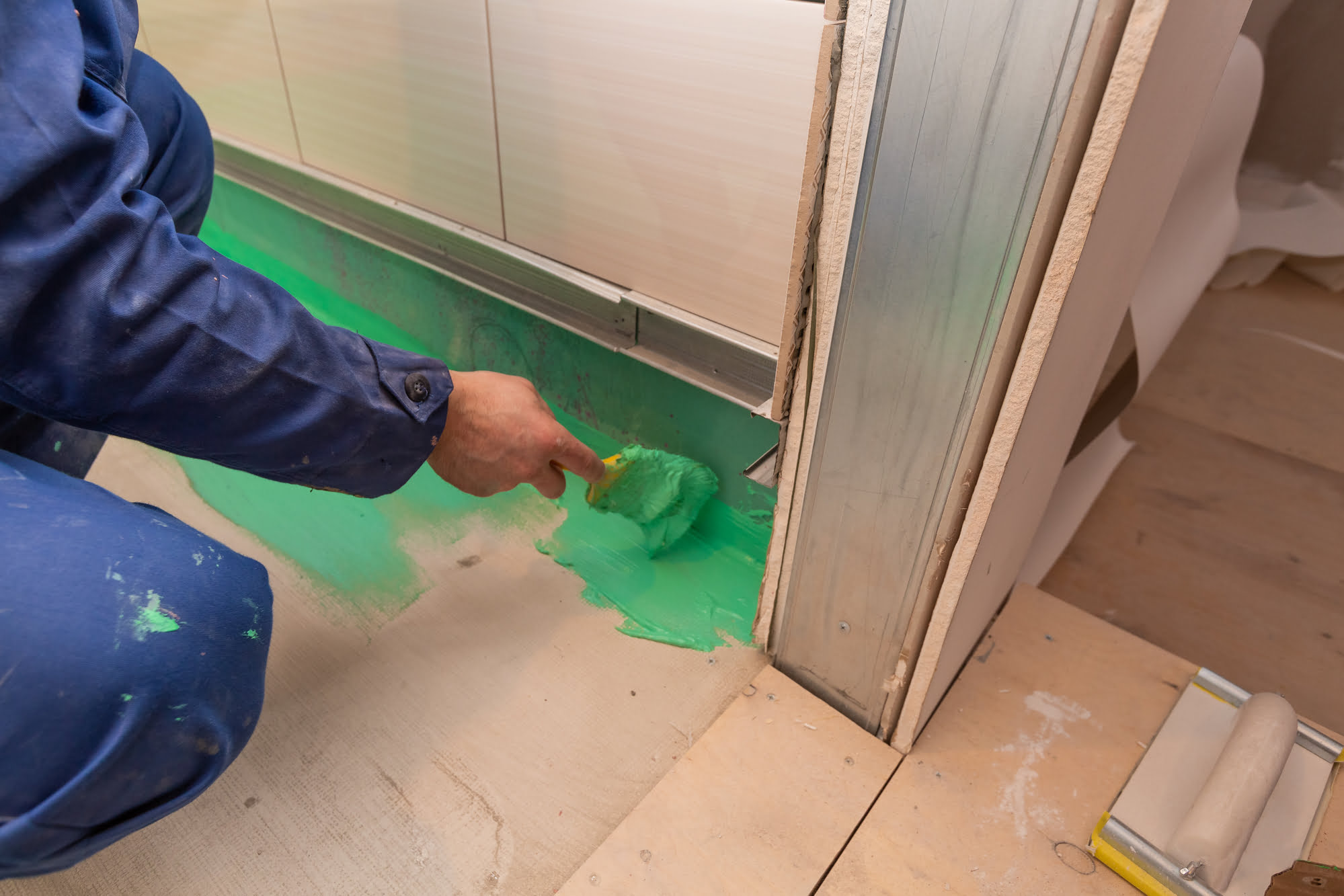Understanding Waterproof Paint for Bathrooms: Is There A Waterproof Paint For Bathrooms

Bathrooms are susceptible to moisture and humidity, making them challenging environments for traditional paint. Waterproof paint is specially formulated to withstand these conditions, ensuring long-lasting durability and a beautiful finish.
The Importance of Waterproof Paint in Bathrooms
Waterproof paint is essential in bathrooms to protect walls and surfaces from the damaging effects of moisture and humidity. Regular paint, when exposed to moisture, can peel, crack, and mildew, leading to unsightly damage and potential health hazards. Waterproof paint forms a protective barrier that prevents water from penetrating the surface, preserving the integrity of the walls and maintaining a healthy and aesthetically pleasing bathroom environment.
Challenges of Moisture and Humidity in Bathroom Environments
Bathrooms are inherently humid environments due to the presence of showers, baths, and sinks. The constant presence of water vapor creates a breeding ground for mold and mildew, which can grow on surfaces, compromising the health of the occupants. Additionally, the condensation that forms on walls and ceilings can lead to paint peeling and cracking, requiring costly repairs.
Waterproof Paint vs. Regular Paint, Is there a waterproof paint for bathrooms
Waterproof paint offers several advantages over regular paint in bathroom environments.
Performance and Durability
- Water Resistance: Waterproof paint is formulated with special resins and additives that create a moisture-resistant barrier, preventing water from penetrating the surface and causing damage. Regular paint, on the other hand, is susceptible to water damage, leading to peeling, cracking, and mildew growth.
- Mold and Mildew Resistance: Waterproof paint contains mildewcide agents that inhibit the growth of mold and mildew, preventing unsightly stains and potential health risks. Regular paint lacks these agents, making it more susceptible to mold and mildew growth.
- Durability: Waterproof paint is designed to withstand the harsh conditions of a bathroom, offering greater durability and longevity compared to regular paint. It can withstand repeated exposure to moisture and humidity without deteriorating, ensuring a long-lasting and aesthetically pleasing finish.
Types of Waterproof Paint

Waterproof paint for bathrooms is essential for creating a durable and moisture-resistant finish. It protects the walls and surfaces from water damage, mold, and mildew, ensuring a healthy and long-lasting bathroom environment. Understanding the different types of waterproof paint available helps you choose the best option for your specific needs.
Types of Waterproof Paint
Waterproof paints are categorized based on their composition and properties. Here’s a breakdown of the common types:
| Paint Type | Features | Pros | Cons |
|---|---|---|---|
| Epoxy Paint |
|
|
|
| Acrylic Paint |
|
|
|
| Polyurethane Paint |
|
|
|
| Rubberized Paint |
|
|
|
Applying Waterproof Paint

The success of your waterproof bathroom paint job hinges on meticulous preparation. Just like a painter’s canvas needs a smooth, clean surface, your bathroom walls and surfaces require careful attention before the paint goes on. This ensures the paint adheres properly, lasts longer, and provides the desired waterproof barrier.
Preparing the Bathroom Surface
Proper preparation is crucial for achieving a long-lasting and effective waterproof finish. Here’s a step-by-step guide to prepare your bathroom surfaces:
- Clean the Surface: Thoroughly clean the bathroom walls and surfaces using a mild detergent and warm water. This removes dirt, grime, and any existing coatings that might interfere with the adhesion of the waterproof paint.
- Remove Mold and Mildew: If mold or mildew is present, treat it with a mold and mildew remover, following the manufacturer’s instructions. Ensure the area is completely dry before proceeding.
- Repair Cracks and Holes: Patch any cracks, holes, or imperfections using a suitable patching compound. Allow the compound to dry completely before sanding it smooth for a seamless finish.
- Sanding: Lightly sand the entire surface to create a smooth, even texture. This helps the paint adhere better and ensures a more uniform finish.
- Prime the Surface: Apply a primer specifically designed for waterproof paint. This helps the paint adhere properly and prevents the underlying surface from affecting the final color.
Applying Waterproof Paint
Applying waterproof paint requires careful techniques to ensure a smooth, even, and durable finish. Here’s how to apply the paint:
- Choose the Right Tools: For small areas, a brush is effective. For larger areas, a roller is ideal. For intricate details, a sprayer can be helpful, but it requires more preparation and practice.
- Brush Technique: Load the brush with paint, avoiding excessive amounts. Apply the paint in thin, even strokes, working in small sections. Overlapping each stroke slightly ensures a smooth, even coat.
- Roller Technique: Dip the roller into the paint tray, ensuring it’s evenly coated. Roll the paint onto the surface in a smooth, consistent motion, working in sections. Overlap each stroke slightly to ensure a smooth finish.
- Spray Technique: Prepare the sprayer according to the manufacturer’s instructions. Hold the sprayer at a consistent distance from the surface and apply the paint in thin, even coats. Overlap each pass slightly to ensure complete coverage.
Tips and Tricks for a Smooth Finish
Here are some helpful tips and tricks to achieve a professional-looking finish:
- Work in Thin Coats: Apply multiple thin coats of paint rather than one thick coat. This allows the paint to dry evenly and reduces the risk of cracking or peeling.
- Avoid Overlapping: When applying multiple coats, avoid excessive overlapping, as this can create uneven thickness and lead to a patchy finish.
- Allow Drying Time: Ensure each coat of paint dries completely before applying the next. Refer to the manufacturer’s instructions for the recommended drying time.
- Clean Up: Clean your tools thoroughly with water or paint thinner, depending on the type of paint used. This prevents the paint from hardening and becoming unusable.
